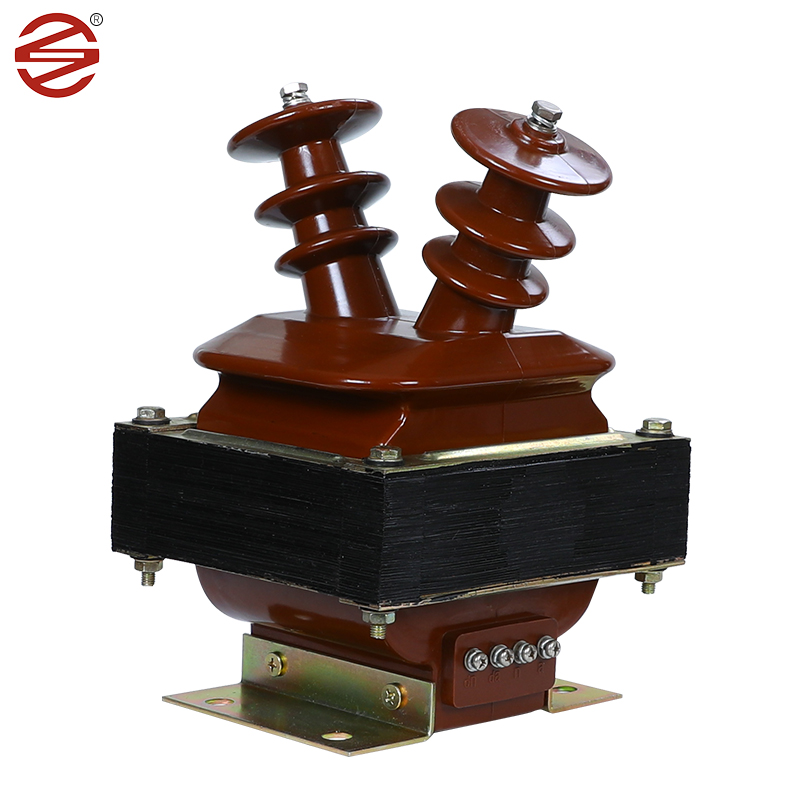Detailed description of 10kv Voltage Transformer
2024-06-28
A 10kV Voltage Transformer (VT), also known as a Potential Transformer (PT), is an electrical device used to step down high voltage to a lower, safer voltage level for measurement, protection, and control purposes in electrical power systems. These transformers are essential in high-voltage environments to enable the monitoring and metering of electrical parameters without directly exposing equipment or personnel to high voltages. Below is a detailed description of a 10kV Voltage Transformer, including its components, working principle, types, and applications.
Key Components and Features
1. Core:
- Material: Typically made from high-permeability silicon steel laminations to minimize core losses.
- Design: Designed to ensure minimal magnetic flux leakage and optimal performance.
2. Windings:
- Primary Winding: Connected to the high-voltage line (10kV). It consists of fewer turns of thick wire.
- Secondary Winding: Connected to measurement instruments and protective relays. It has more turns of thinner wire to step down the voltage to a standard level, usually 100V or lower.
- Insulation: High-quality insulation materials are used to ensure safety and reliability, preventing breakdowns and short circuits.
3. Insulating Medium:
- Oil-Immersed Transformers: Use transformer oil for insulation and cooling.
- Dry-Type Transformers: Use air or solid insulation materials like epoxy resin.
4. Bushing:
- Purpose: Provides a safe passage for the primary winding to connect to the high-voltage line.
- Material: Made from porcelain or polymer materials to withstand high voltages.
5. Tank/Enclosure:
- Material: Typically made from steel or aluminum.
- Design: Protects internal components from environmental factors and provides mechanical support.
6. Terminal Connections:
- Primary Terminals: Connect to the high-voltage power source.
- Secondary Terminals: Connect to measuring instruments and protective devices.
7. Cooling System:
- Type: Natural air cooling or oil cooling, depending on the design.
- Purpose: Dissipates heat generated during operation to maintain optimal performance.
Working Principle
A 10kV Voltage Transformer operates on the principle of electromagnetic induction. The primary winding, connected to the high-voltage line, induces a magnetic field in the core when voltage is applied. This magnetic field then induces a voltage in the secondary winding. The voltage ratio between the primary and secondary windings is proportional to the turns ratio of the windings, allowing the high voltage to be stepped down to a lower, measurable level.
Types of 10kV Voltage Transformers
1. Electromagnetic Voltage Transformers (EVTs):
- Design: Traditional design using magnetic cores and windings.
- Application: Suitable for general measurement and protection purposes.
2. Capacitive Voltage Transformers (CVTs):
- Design: Use a capacitor voltage divider in conjunction with a transformer.
- Application: Commonly used in high-voltage transmission systems for protection and metering due to their ability to handle higher voltage levels and provide a stable voltage signal.
Applications
1. Power Distribution and Transmission:
- Used to step down voltage for metering and protection in substations and transmission lines.
2. Protective Relaying:
- Provides accurate voltage signals to protective relays to detect and isolate faults in the power system.
3. Metering:
- Supplies low voltage to energy meters for accurate billing and monitoring of electrical energy consumption.
4. Instrumentation:
- Provides voltage signals to various instruments for monitoring and control of electrical parameters.
Advantages
- Safety: Isolates measuring and protection devices from high-voltage circuits, ensuring operator and equipment safety.
- Accuracy: Provides precise voltage measurements for reliable operation of meters and protective devices.
- Durability: Designed to withstand harsh environmental conditions and high electrical stresses.
- Efficiency: Minimal power losses due to high-quality materials and design.
Installation and Maintenance
- Installation: Typically installed in substations or on transmission towers. Requires proper grounding and secure connections to prevent electrical hazards.
- Maintenance: Regular inspection and maintenance are required to ensure reliable operation. This includes checking insulation integrity, oil levels (for oil-immersed transformers), and terminal connections.
Conclusion
A 10kV Voltage Transformer is a critical component in high-voltage power systems, enabling accurate measurement, protection, and control. Its robust design and precise operation make it indispensable for ensuring the safety and efficiency of electrical power distribution and transmission networks.



